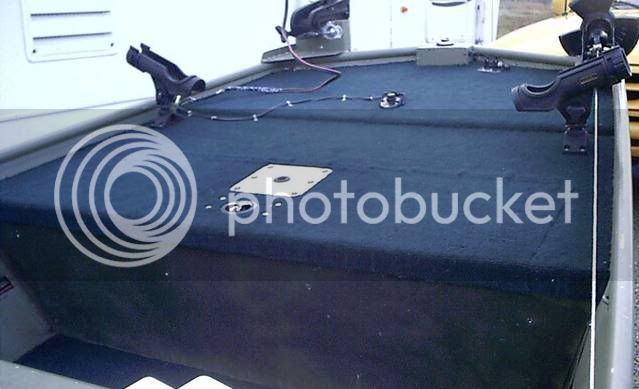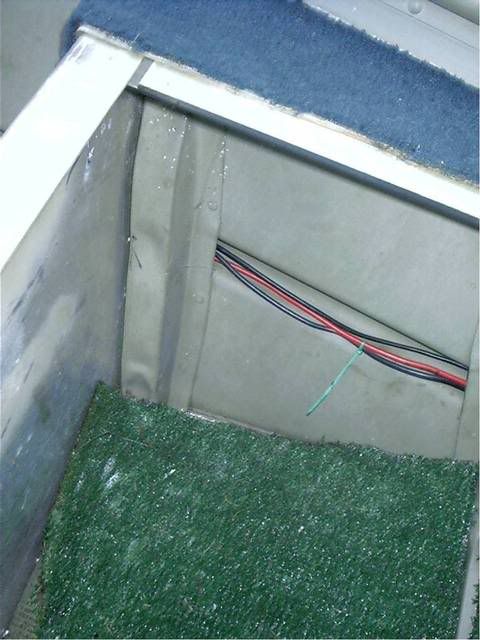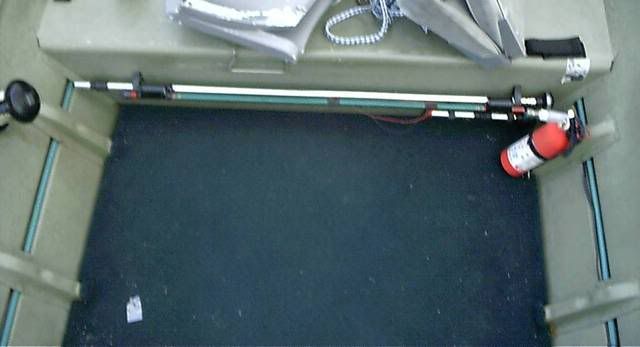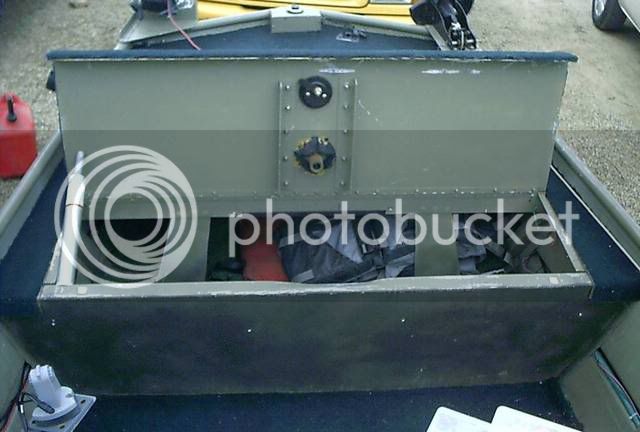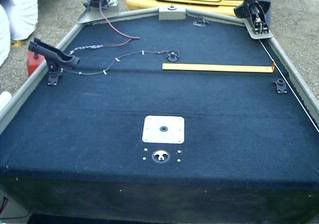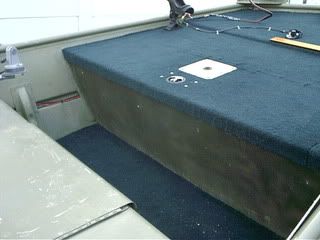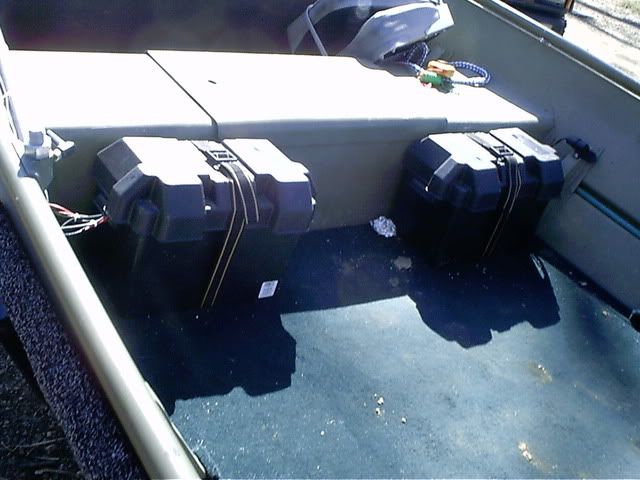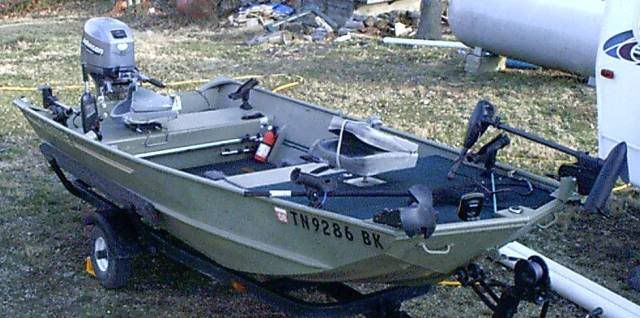I will post my response to atb's PM, so y'all can see it as well, as it seems there is other interest in it.
"
atb said:
bassboy1
Great job you did on your boat. I think I am going to use all aluminum as well and hope you dont mind a few questions.
No problem.
Could you recommend a good rivet gun and food rivet size to use?
As far as a rivet gun, I would recommend a pneumatic one, if you have a compressor, and the funding to allow that. I have yet to have one, but the times I have been in other shops and used one, I can definitely tell you they are worth their weight in gold. If not, the stanley one from Home Depot is perfectly fine.
For size, there are a lot of options. For my structure, it is pretty much all 3/16 rivets. These things are very strong. I used a combination of 3/16, 5/32 and 1/8 inch to hold my deck and side paneling down. Here is my recommendation. The deck holds just fine with 1/8 inch rivets, and they won't be felt through carpet. Plus, they are cheap - twice as many in the same price box as the other two sizes. I put them at 6 inch intervals, which is probably overkill, but that is the way I roll.
On side paneling, I would recommend using 1/8 on things that are there as side panels. On panels that also serve as a gusset (on a lot of the hatches, rod locker for instance, the frame itself is very weak, and very prone to twisting - the paneling gave the resistance to flexing, and it is rock solid) I would use 5/32.
You will be using more rivets than you think you will. You may want to look at buying them online, in quantity. If not, Northern Tool does have them cheaper than Home Depot, but they lack 5/32. Lowes (at least here) doesn't have many sizes, and they are a little more expensive.
What was the thickness of the aluminum used for your deck?
I used .090 because that is what I had cheap access for. If possible, .125 is the way to go. That is what I was looking for, but was unable to find at the price I wanted. On my next build, I will likely be searching for .125. However, .090 is acceptable, with enough structure. I have no flex in my deck. I wouldn't go any less than that though, as you will be adding more structure than you will wish to.
How did you secure the frame to the sides of the boat? I see how you did it with the ribs on the bottom but was curious with the side?
I didn't. In one place, on the starboard side of the bow deck, by the rod locker, you can see where I substituted a gusset to the rib in place of the leg, as a leg would have impeded the rod locker. There were a couple reasons for no side contact up there. First of all, there was little structure to attach to. The front rib stopped at the side of the hull, and didn't wrap up, and the next rib didn't go all that high. Also, without the structure, the sides up there weren't really suited for holding a load. I did connect to the bulkhead I had, and it is connected to the hull.
On the rod locker, I did connect to the ribs. I cut a piece of 1 x 1 so that it would be level on top, when connected to the exposed top of the channel rib. Then, I connected it with a piece of flat plate riveted to this tube, and to the rib. There are some pictures of that on this page of my thread, which I didn't have in my shareaproject link.
https://www.tinboats.net/forum/viewtopic.php?f=21&t=1684&start=30"
In response to a few questions on this thread....
My thinking is the following; no more than 9 inches between vertical braces. Horizontal every 4... ?
3/16ths Aluminum sheet.
Does this sound realistic?
I would go .125 on sheet, as opposed to .1875. The extra structure needed will be lighter/cheaper than the extra sheet.
Your idea on bracing is a bit on the high side.
I used .090 thickness, out of necessity on mine. Horizontal supports were every 7 inches on my lower deck. Just parallel bracing, no transverse. Really no noticeable flexing. And, this is 1/2 the thickness of what you were planning. If you make a square or rectangle in your bracing (basically bracing both sides) you can get by with less even. I have a few 10 by 16 or bigger spans in bracing, with no flex.
On your vertical bracing, you can get by with a lot less. I used 1 x 1 square tubing, with 1/16 wall thickness for my rig. I used four vertical legs on my bow deck, which is more than 55 inches wide. And, that was because of the way Yazoo bent the ribs to form the slight V shape, I couldn't put a leg in the middle. Instead, I put one on either side of the middle as well as one on each side of the deck, as I didn't want it to be at all asymmetrical. 3 would have been just dandy. On my whole bow deck, there were 5 transverse "beams." Up in the bow, I used the lip formed into the bow cover as beam 1. Then, my next one back is about 14 inches back. After that, I have another 16 inches between beam 2 and beam 3 and the same between beam 3 and 4 (existing bulkhead). Beam 5 is at aft end of the bow deck.
Look at my leg placement on my rig, knowing what I said about the beam spacing (there is a lot of longitudinal structure, but that is solely for deck/hatch support, and all the load from there is transferred to the transverse structure I have been talking about).
On my stern deck, I used 3 beams, on a 30 inch span. 14 inches between the fore and middle beam, and 16 or so between the next set. The front two beams have legs, and the aft one doesn't, and there is no flex back there either. (Look at my stern deck, and ignore the pieces that hold the seat bases - they are there for the bases only).
Keep in mind that I had 1/16 wall, which is rather thin. My local supplier only stocks 1 x 1 with .125 wall, which is REAL strong. I would have cut out a lot of vertical structure if my beams had been made of that (wouldn't have used it for the rest of the structure, as it is so frequent to support my thin deck, not because it couldn't hold).
Hope that helps. I have the feeling I have confused you.
Best way to figure out what sort of span you need is to stress test the pieces you need. Take a few pieces of decking, and lay them out on a couple boards, or pieces of aluminum as your "structure." Vary the dimensions, and stand on the panel, to see if it flexes. When you can bounce on it without much flex, you have your dimensions. Keep in mind that riveting it to the structure tightens it up a significant amount. Do the same with your structure. Stand on a couple pieces that are layed across 2 boards.



